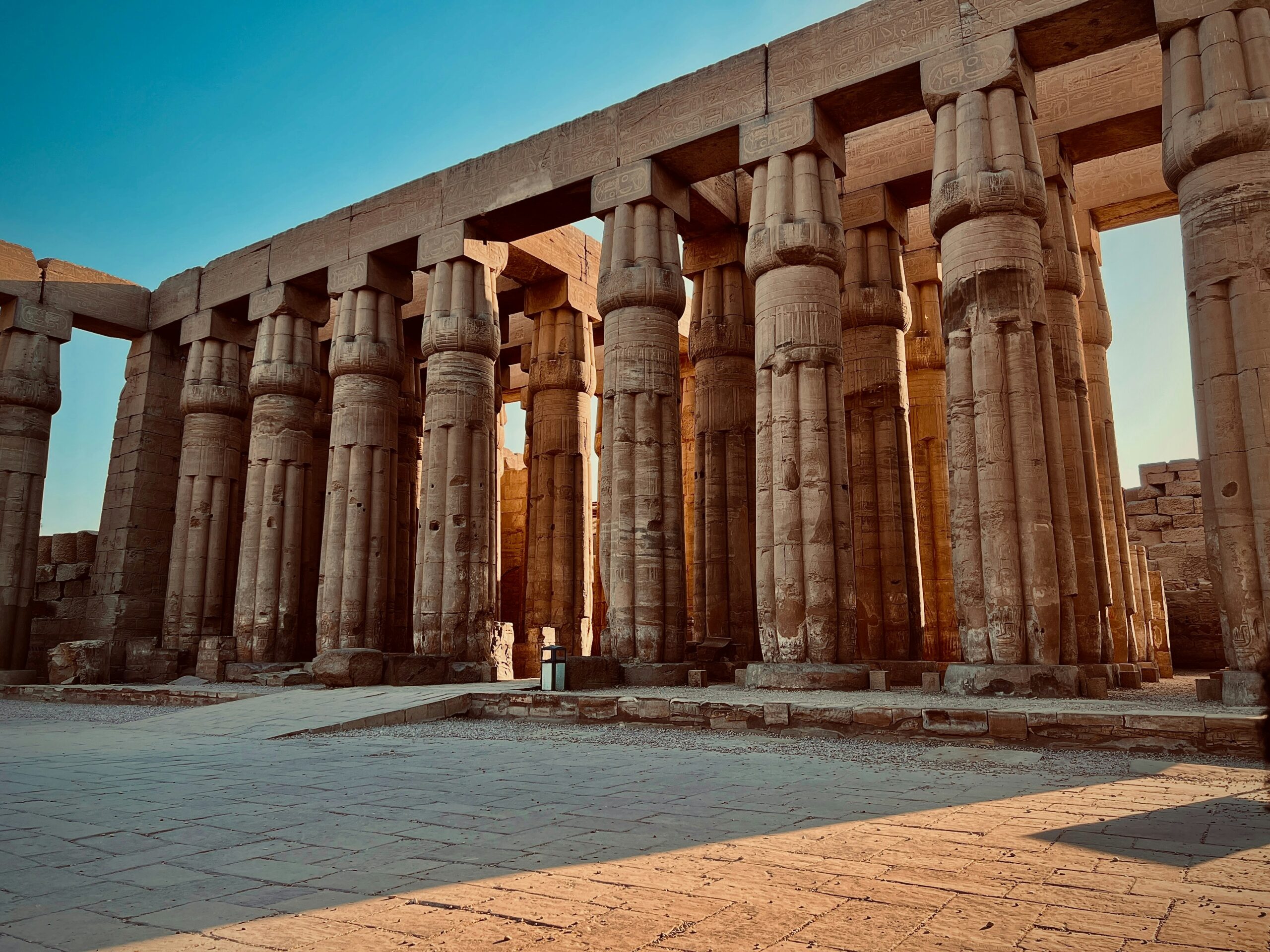
Luxor Temple: A Timeless Masterpiece on the East Bank of the Nile
Luxor Temple is one of Egypt’s most remarkable ancient monuments and a highlight for anyone visiting Luxor. Located in the heart of the city on the East Bank of the Nile, this magnificent temple was dedicated to the worship of Amun and served as a central site for royal ceremonies, including coronations and religious festivals. It remains one of the best-preserved temples in Egypt and offers visitors a captivating journey through ancient history.
Why Visit Luxor Temple?
Unlike other temples in Egypt that were primarily built for gods, Luxor Temple was closely connected to kingship. It was the setting for the Opet Festival, where the statues of Amun, Mut and Khonsu were paraded from Karnak Temple to Luxor Temple to renew the power of the pharaoh. A visit to Luxor Temple provides insight into royal rituals, Egyptian beliefs and the evolution of pharaonic architecture.
The temple is especially impressive at night, when its walls and statues are beautifully illuminated, creating a magical atmosphere.
History of Luxor Temple
Luxor Temple, known in ancient times as “Ipet Resyt” meaning “The Southern Sanctuary,” was constructed during the 14th century BC. It was started by King Amenhotep III and later expanded by several rulers, including Tutankhamun, Horemheb, and Ramses II. Alexander the Great also added his own shrine within the temple, reflecting its continued significance across eras.
The temple was used throughout different stages of history. During the Roman era, parts of it were transformed into a military fortress. Later, a section of the temple became the foundation of a mosque, which still exists today, creating a unique blend of ancient Egyptian and Islamic heritage.
Main Highlights Inside Luxor Temple
The First Pylon
The grand entrance built by Ramses II, decorated with scenes of his military victories. Originally, six colossal statues stood at the gateway, with two still visible today.
The Avenue of Sphinxes
A ceremonial road lined with sphinx statues that once connected Luxor Temple to Karnak Temple. A large section has been restored and can be walked today.
The Courtyard of Ramses II
An impressive open court featuring statues and shrines dedicated to various deities, giving visitors a sense of the temple’s scale and beauty.
The Colonnade of Amenhotep III
A stunning pathway of tall papyrus-shaped columns that leads to the inner areas of the temple. It is one of the most photographed sections.
The Inner Sanctuary
The most sacred part of the temple, once housing the barque of Amun. It reflects the spiritual significance the temple held for ancient Egyptians.
The Abu Al-Haggag Mosque
Built in the 12th century on top of the temple ruins, this mosque is still active today. It demonstrates Luxor Temple’s long-lasting role as a place of worship through different civilizations.
Best Time to Visit Luxor Temple
Luxor Temple can be visited during the day or in the evening, but many travelers enjoy visiting at sunset and staying after dark. The lighting at night enhances the columns, statues and carvings, making the site even more atmospheric.
Morning visits are less crowded and ideal for photography. Evening visits provide a unique experience that many visitors consider a highlight of their trip.
Tips for Visiting Luxor Temple
Wear comfortable shoes as the temple involves walking on uneven surfaces.
Consider hiring a licensed Egyptologist guide to gain a deeper understanding of the temple’s history and symbolism.
Many visitors combine Luxor Temple with Karnak Temple on the same day for a complete experience of Luxor’s ancient wonders.
Evening visits are highly recommended for the illuminated view.
Where is Luxor Temple Located?
Luxor Temple is located in the center of Luxor on the East Bank of the Nile, near the Corniche and surrounded by shops, restaurants and hotels. It is within short reach of most accommodations on the East Bank and is easily accessible by taxi, on foot or through a guided tour.
Final Thoughts
Luxor Temple is a masterpiece of ancient Egyptian art, architecture and history. Its impressive structures, detailed carvings and unique role in royal ceremonies make it one of the most fascinating temples in Egypt. Whether you visit during the day to admire its historical richness or at night to experience its magical illumination, Luxor Temple is a landmark that should not be missed on any trip to Egypt.





